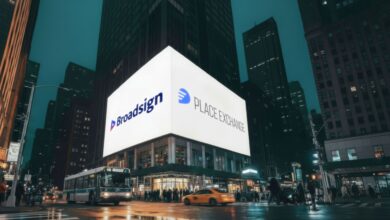Featured Project: Christie Lights Up Florida Community with its Technology
This is the second year that Christie has sponsored the event, in which the entire town of Alys Beach, Florida, is lit up using projection mapping.
Cypress, California-based audio-visual company Christie participated in an event earlier this summer in Alys Beach, Florida, called Digital Graffiti, in which projection mapping is used to – literally – colorfully light up an entire town.
The annual festival brings together artists from around the world to light up this small Florida town on the Gulf side, just north of Panama City. For the second straight year Christie sponsored the event, providing both the projection technology and its Pandoras Box media servers for the artists to use.
Artists exhibiting at the festival include John Colette, professor of motion media design, Savannah College of Art and Design (SCAD), who participated with his students and as an Artist in Residence. Using Christie M Series projectors, Colette and 20 students from SCAD lit up walls throughout Alys Beach. Emilia Forstreuter, a visual artist and freelance motion designer, who has been a multi-year finalist at Digital Graffiti, used two Christie Boxer projectors for her installation at Caliza Court.
Colette says of projection mapping, “It’s a growing area of practice that touches a lot of other areas like architecture and themed entertainment. There are so many applications of this technology, and Digital Graffiti is a great example of this being brought together in a very pragmatic yet also creative way. Every year it’s a kind of laboratory for seeing what you can do in this context and watching people in a live environment respond to different kinds of projected works.”
For Forstreuter, Digital Graffiti is a chance to show her work on a larger scale. At the festival, she worked with two Christie Boxer 4K30 projectors, each with 30,000 lumens and 4K resolution, and says that the high brightness of the projectors is necessary to create a large format and high-resolution image with the color depth and vibrancy that she requires.
Forstreuter says that she was “excited about the possibility of creating an immersive space based on the scale of the projection. At the same time, this is also the challenge. When I’m creating the work, I’m looking at a small screen and the speed of movement is very different when it’s scaled up. For this huge scale the movement has to be slowed down so the audience isn’t overwhelmed.”
For the festival, she created an abstract study of the interaction of color and the in-between of 2D and 3D.






